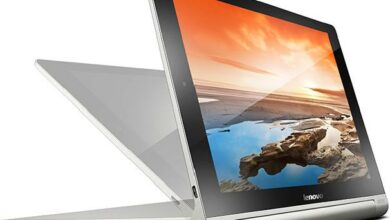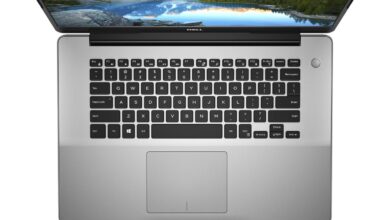
Table of Content
SATA cable or say Serial Advanced Technology Attachment is an IDE standard for connecting devices such as optical drives and hard drives to the motherboard that was first published in 2001. SATA refers to the various types of cables and connections that adhere to this standard. Serial ATA has supplanted Parallel ATA as the preferred IDE technology for linking storage devices within a computer. SATA storage devices are substantially faster than PATA storage devices at transmitting data to and from the rest of the computer.
What Is PATA?
PATA is also referred to as IDE. If you see the terms SATA and IDE used interchangeably, it simply signifies that Serial and Parallel ATA cables or connectors are being discussed.
Difference Between SATA Cable and PATA Cable
SATA cable has the advantage of lower cable costs and the ability to hot-swap devices when compared to PATA. The term “hot-swap” refers to the ability to replace devices without shutting off the entire system. Before replacing a hard drive with a PATA device, you must turn off the computer. While SATA drives enable hot-swapping, the device that uses them, such as the operating system, just as well.
SATA cables are substantially smaller than PATA ribbon cables, which are thick and bulky. This makes them easier to handle because they take up less space and can be tied up more readily if necessary. The PC case’s slimmer shape also allows for improved airflow. SATA transfer speeds are substantially faster than PATA, as you can see from the table above. PATA devices can transport data at a maximum of 133 MB/s, while SATA devices can transfer data at up to 600 MB/s (as of revision 3.4).
SATA Vs PATA
- Length: A PATA cable’s maximum cable length is only 18 inches (1.5 feet).
SATA cables can be as long as 1 meter (3.3 feet), giving you more flexibility in where you place your gadgets.
A PATA data cable, on the other hand, can have two devices connected at the same time, whereas a SATA data connection can only have one. - Operating System: Some Windows operating systems, such as Windows 95 and 98, do not support SATA devices. However, given how old certain versions of Windows are, that shouldn’t be a problem these days.
- Separate Hard Drives: Another downside of SATA hard drives is that they sometimes necessitate the installation of a separate device driver before the computer can begin reading and writing data to them.
What are the distinctions between SATA Cable 1, 2, and 3?
There are no physical distinctions among SATA cables because all connectors are the same. The speed of transfer is the difference:
- First Version SATA: This data transport interface is the first version, with a bandwidth of up to 150MB/s.
- Second Version SATA is the second generation of this data transfer interface, with a bandwidth of 300 megabits per second.
- Third Version SATA: The current version of this data transfer interface, which is the third generation. It has a bandwidth of 600 megabits per second.
What Are The Different Types of SATA Cables?
When it comes to SATA cables, the first distinction to make is between the data cable and the power wire. The data and power cables have the same name, which is unusual. Both cables are necessary for any hard disc or optical drive. The data wire is connected to the motherboard directly, while the power cable is connected to the power supply.
The fact that SATA power cables have a 90o angle and a boss means that they can only be connected one way is an interesting feature. Despite the fact that only four cables reach the connector, it has a total of 15 connecting pins on the inside.
Let’s have a look at the most popular varieties of SATA cables used in computers.
1. SATA Cable Data

SATA-type data cables are known for being quite flat and able to tolerate a lot of twisting. Although some cables feature connectors at a 90o angle, we can locate cables with straight connectors at both ends. The purpose of these connectors is to connect storage or optical discs.
2. SATA Power Cable

All storage and optical drives require power, which is provided via a SATA power cable. The power cords can contain one to four power connectors, allowing many units to be powered with the same SATA power cable. SATA drives are frequently powered by numerous cables on modern power sources. There are special adapters that can turn this one into other connectors if we need more. MOLEX to SATA adapters and 6 pin PCIe to SATA adapters are available.
3. SATA Low-Profile low-profile-SATA
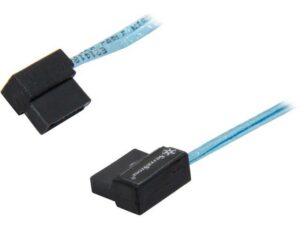
Special connector developed for extremely small systems with a little physical area. This cable has very tiny cables and is based on a very simple connector. They’re also made up of just one or two very thin cables that don’t have the plastic sheath that ‘regular’ SATA connectors have.
4. SATA to IDE adaptor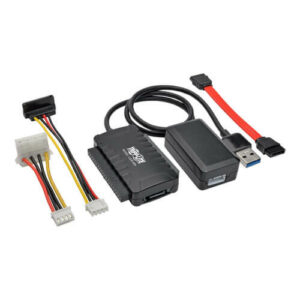
ide-SATA-adapter. The purpose of this adapter is to allow current motherboards to use IDE-type hard drives.
It can also be used to recover data from an IDE drive.
5. Micro SATA (mSATA)
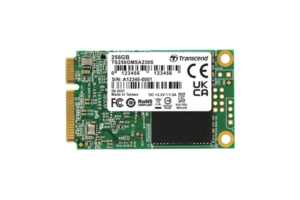
It is distinguished by the fact that the power and data connectors are combined into a single connector.
Notebooks and tiny form factor embedded systems commonly use this sort of cable. These cables are also used in ‘hot swap’ systems, which allow you to remove hard drives while they are still hot.
6. ESATA
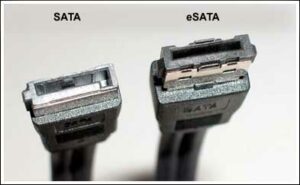
External storage units are connected using special cables with a stronger connector and a more resistant mechanism. These are no longer in use because the USB 3.0 connector provides faster data transmission speeds.
Bracket for SATA
ESATA ports socket for PCI slots in computer towers. On the other end of these unique wires is a SATA connector that connects directly to the motherboard. It is an adaptor that converts from SATA to USB, rather than a cable. This USB hard drive adapter allows you to attach a storage device without having to unlock your computer.
What To Do When SATA Cable Slowing Down?
In our recent experience, the performance of SATA 6Gb/s plummeted inexplicably when we switched from one motherboard to the next. Both boards, in principle, should have provided the same performance on the SATA 6Gb/s port because they used the identical south-bridge chip and SSD. We chose to replace the SATA cable with a “genuine” SATA 6Gb/s cable after ruling out drivers and a misconfigured benchmark run. The performance magically returned to our expectations.
This made us surprised if “genuine” SATA 6GB/s cables are really necessary when using high-performance SSDs. The official SATA International Organization response is a resounding nay.
Q: Does SATA Connector Accommodate To increased The Transfer speed?”
In its FAQ, SATA I/O explains it like way: Current SATA 1.5 and SATA 3.0 Gb/s cables and connectors can be used to connect SATA 6Gb/s devices, while SATA-IO recommends using high-quality components to assure data integrity and reliable operation at the faster SATA 6Gb/s transfer rate. SATA 6Gb/s can be integrated into the same cost-conscious hardware architectures as before, minimizing infrastructural changes.”
When you think about it, that’s a fairly incredible achievement. SATA 150 has been found in motherboards since at least 2002. It’s almost as if you’re asking for a USB cable you bought in 1997 to handle USB 3.0’s throughput.
Even Parallel ATA, which had the coveted 80-conductor cables, went through multiple versions.
Throughout its existence.
Which SATA Cable Compitable Most?
We selected a clutched of cables, including two that date back to the early days of SATA, to put SATA to the test.
What evidence do we have that they’re that old? We removed the cables out of historic motherboard boxes that had been moldering in our lab, despite the fact that they aren’t dated.
SATA Cable With Intel 875P Mother Board
The first was an Intel 875P board, while the second was a nForce 2 board. The rest SATA Cables were found from different places. One cable was an expensive Adaptec SATA cable that came with a RAID card, another was a cheapo 36-inch SATA cable that fell just short of the maximum length of 3.3 feet, and still, another was a tiny pig-tail SATA cable with a run length of about 5-inches. For a final fun test, we joined three 36-inch SATA cables together with SATA cable extenders, resulting in a 9-foot SATA connection that we actually extended across the room.
SATA Cable With ASUS Mother Board
We selected an Asus motherboard with Intel’s newest peripheral controller hub and its blisteringly fast SATA 6Gb/s performance to conducting our test. We used a 240GB OWC Mercury Extreme Pro SSD as our test drive.
The Mercury Extreme Pro is one of the fastest SSDs on the market today, thanks to its Sandforce 2nd generation controller. We utilized CrystalDiskMark 3.0.1 to test the performance and performed the benchmarks’ sequential read and write scores three times. The cables were all connected to the same SATA port.
Expriemental Findings
- Let me start by saying that we were certain we’d see a difference when we started this. After all, switching to a genuine SATA 6Gb/s cable fixed our issues the first time, right? Wrong. As we progressed through the first few cables, we realized that the SATA I/O had done its job when it created the Serial ATA cable specification.
In terms of performance, a brand-new SATA 6Gb/s labeled cable built this year and one made nearly eight years ago are virtually identical. Whether it was an expensive cable or a cheap cable, a long cable or a short cable, none of it seemed to make a difference. Minor performance differences can be attributable to differences in the benchmark or the SSD. - During our testing, we also tried a couple of activities that aren’t always advised, such as bending your SATA cable at right angles. Many motherboard manufacturers advise against putting right-angle kinks in cables during system builds, so we tried it with a cable and added about 15 right-angle kinks: no difference. We also wrapped a 36-inch cable around a hot PSU cable and saw no difference.
What about utilizing male-to-male connectors to link two 36-inch cables end-to-end?
That’s around 30 inches longer than the SATA cable length specification: No Difference. Running three 36-inch SATA cables end-to-end utilizing cable No. 3, No. 4, and No. 11 was the only thing that halted SATA dead in its tracks. But Do not attempt this at home.
We didn’t want to just pile it on the desk, so we stretched it across the lab and powered the OWC Mercury Extreme Pro drive with a remote PSU. Surprisingly, read rates were around 250MB/s, but write speeds, which we assume are a little more stringent due to the controller and protocol, were only about 25MB/s.
Due to read and write errors on the device, the benchmark ultimately failed. We wouldn’t trust our data to it because it didn’t always work…
Concluding Remarks
So, what does all of this mean? The SATA cable is a very durable cable. It’s the equivalent of a cockroach or an AK in terms of computer wires. That’s not awful, and we wish all computer cords worked like that. We’ve got our fair share of weird USB support due to particularly shoddy USB cords.
But what about our original motherboard test, in which switching cables were found to be the solution? Looking at our data, we believe a bad cable, a filthy connector, or a connector that wasn’t seated was the more likely issue. It’s a good reminder that one incident isn’t enough to start a trend. Our hats are out to the SATA I/O for providing such a robust cable specification.
Read Also: What is Error 0x0 0x0



